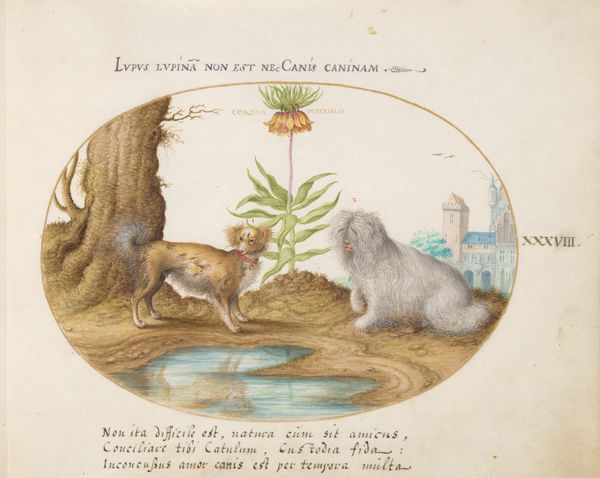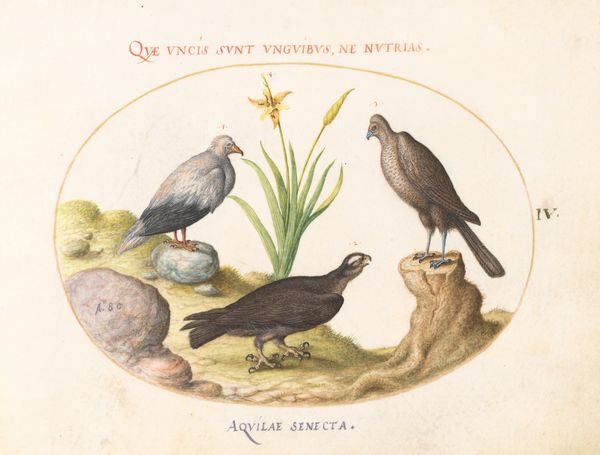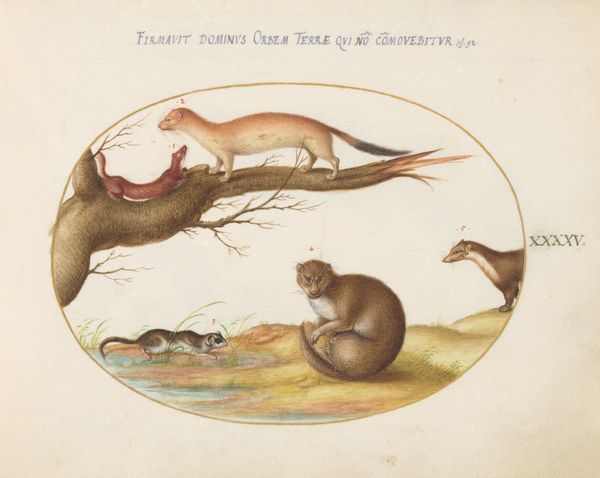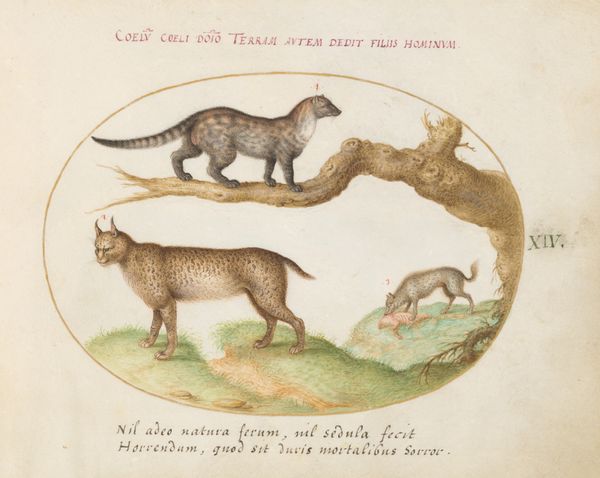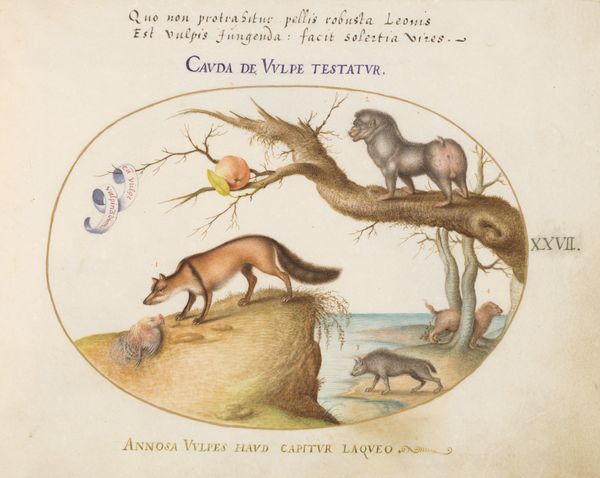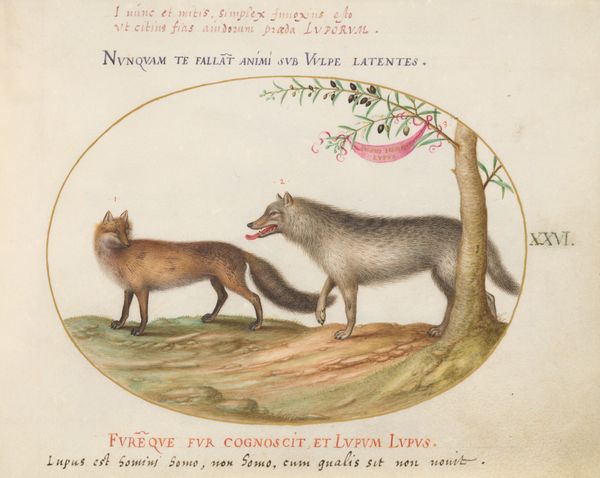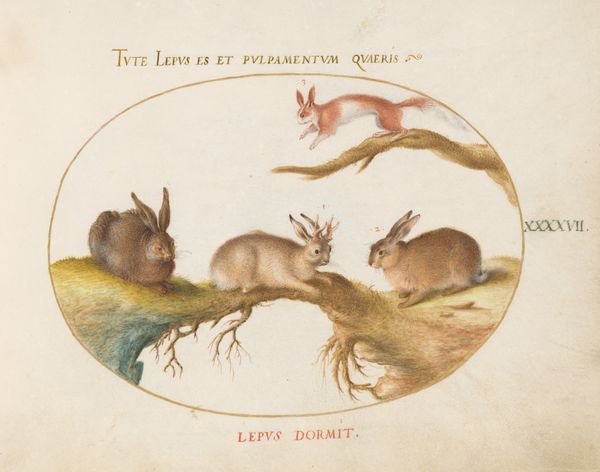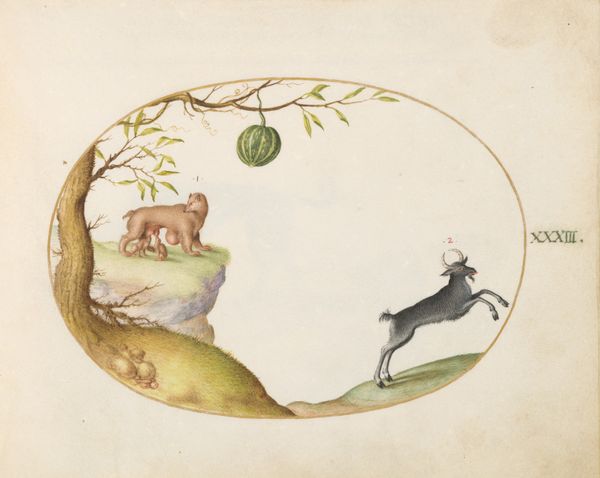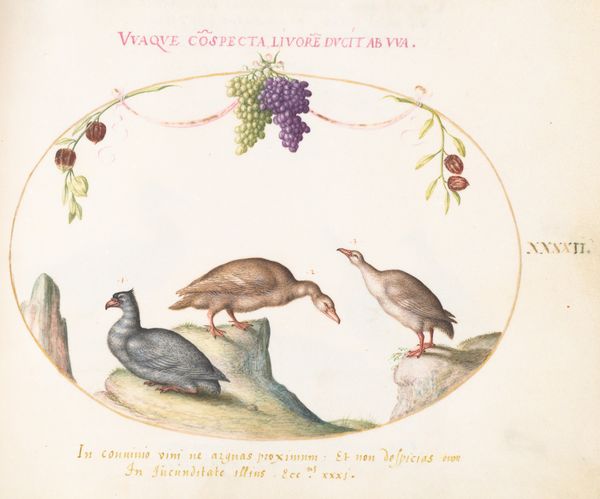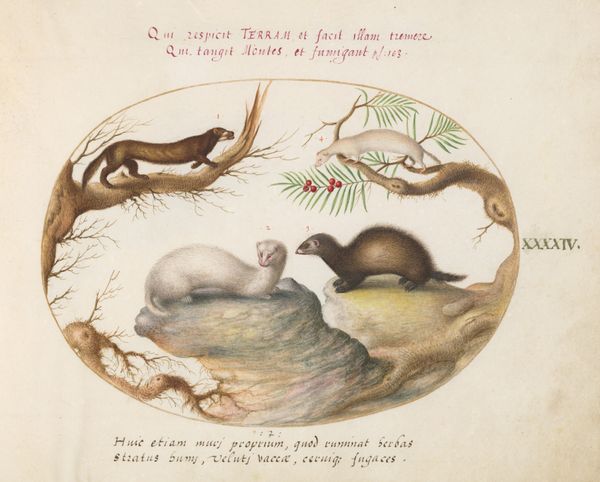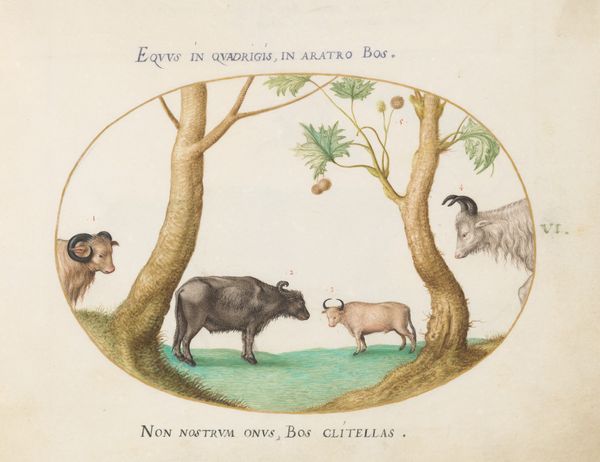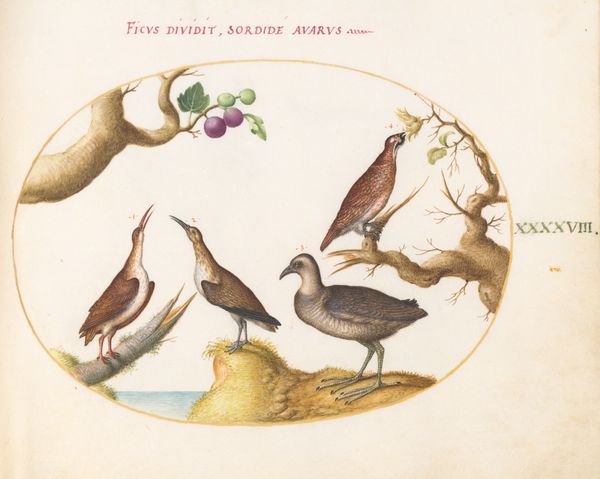
Plate 23: A Fat-Tailed Sheep, a Sheep with a Long Tail, a "Cassia purgatrix,"and Other Plants c. 1575 - 1580
0:00
0:00
drawing, coloured-pencil
#
drawing
#
coloured-pencil
#
landscape
#
figuration
#
11_renaissance
#
coloured pencil
#
botanical art
#
watercolor
Dimensions: page size (approximate): 14.3 x 18.4 cm (5 5/8 x 7 1/4 in.)
Copyright: National Gallery of Art: CC0 1.0
Editor: This is "Plate 23: A Fat-Tailed Sheep, a Sheep with a Long Tail, a "Cassia purgatrix," and Other Plants," a drawing made with colored pencil around 1575-1580 by Joris Hoefnagel. I am fascinated by the shapes in this piece – it is encased in an oval, and there are the rounded forms of the sheep itself. What do you see in this piece? Curator: I am immediately drawn to the arrangement of forms and the interplay between them. The oval format, as you pointed out, structures our viewing. Notice how the plants and animals are meticulously placed to balance positive and negative space. What effect does this balancing have on your reading of the piece? Editor: I see that the negative space directs my eyes to the objects in the drawing. Is there significance to using the coloured pencils rather than another medium? Curator: Precisely. Hoefnagel's choice of colored pencil is crucial. It allows for a remarkable level of detail and tonal variation, which lends itself to the descriptive exactitude we see here. Consider the gradations in color that define the sheep's wool – an effect that might be difficult to achieve with ink alone. Editor: So the medium underscores the piece's focus on specificity and clear details. Is the inclusion of both sheep and plants common for art during this period? Curator: The combination speaks to a broader interest in natural history that blossomed during the Renaissance. Note the presence of both flora and fauna. The work meticulously captures distinct specimens for what might have been scientific record, and also incorporates text. How might this integration reinforce the artwork's meaning? Editor: The writing on the piece may have been used to identify different parts of the artwork or simply describe the drawing itself. Thank you, I now notice how Hoefnagel brings a scientific dimension to his art through composition, form, and representational technique. Curator: Indeed, a beautiful demonstration of science and art intertwined, rendered with technical skill.
Comments
No comments
Be the first to comment and join the conversation on the ultimate creative platform.
